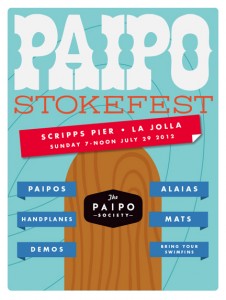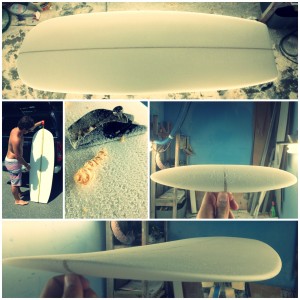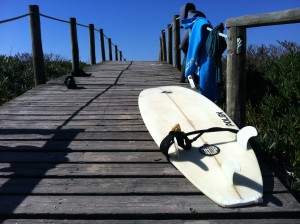Surf Industry Riding the Digital Wave
, Posted in: Inspiration, Author: nleavitt (July 25, 2012)


 Way back in the summer of 2000, I wrote a story for Digitrends, a now defunct tech publication, which focused on how the surf industry was utilizing the Internet for branding, marketing, and sales purposes.
Way back in the summer of 2000, I wrote a story for Digitrends, a now defunct tech publication, which focused on how the surf industry was utilizing the Internet for branding, marketing, and sales purposes.
Fast forward 12 years later to July 2012 – which probably equates to about 200 years in tech time — and not surprisingly, there’s been a sea change (pun intended) in the industry. SurferToday.com , an international surfing news center, estimates annual revenues – about $15 billion in 2000 – now top $20 billion.
Not surprisingly with that much ka-ching at stake, surf associations, non-profits, surf shops large and small – have not only embraced the Internet, but are using every available social media tool to create and generate both buzz and revenue.
Gnarly.
So how has the industry evolved and grown online in just over a decade? Last April, the Surf Industry Manufacturers Association (SIMA), which bills itself as ‘the official working trade association of more than 300 surf industry suppliers,’ held their annual Visual Merchandising and Retail Marketing Boot Camp in Dana Point, CA. Attendees and presenters talked about their digital experiences in surf retail shops.
A creative director for an interactive marketing company made a particularly cogent remark at the boot camp:
“The youth are consumers of tomorrow, not knowing a world without digital interaction.”
With this in mind, here are three brief examples of how some companies, to use some surfing slang, are ‘cranking and cooking’:
Green Lightning Surfboards
Mike Emery co-founded New Hampshire-based Green Lightning Surfboards . The company constructs boards only with recycled foam, bio-epoxy resin and hemp fabric to significantly reduce the use of fiberglass. Emery currently derives about 30% of his business from online sales.
Emery constantly scours the web for the latest in surfboard craftsmanship, and connects directly with shapers to glean the latest techniques.
“The comments and suggestions we get from some of the world’s best are right at our fingertips – it’s R&D gold,” said Emery.
Emery added that Green Lightning Surfboards regularly uses major social networking platforms like Facebook, Twitter and Instagram to communicate with fans and followers.
“They provide us with a global reach to help prove that performance and sustainability are not mutually exclusive,” said Emery.
Wegener Surfboards
Jon Wegener, principal of Wegener Surfboards has been churning out surfboards in Southern California ‘for decades.’ He now regularly uses social media to get some traction on new projects and said about half of his sales are generated through people finding him and his company online via Facebook or his blog.
One example is his ‘greener product’ surfboards. To generate some buzz, Wegener constantly posted visuals and info about the new boards on his company’s site, emphasizing the environmentally-friendly materials used.
Most recently, the company has developed a paipo (a Hawaiian word designating a short or small board; in short, it’s a belly board). To help generate sales, one of Wegener’s friends launched a website, The Paipo Society. The site’s online mission statement reads: “We are a collective of waterborne individuals who enjoy riding finless, Hawaiian-style wood paipos. Our mission is to get every surfer to add a paipo to their quiver.”
Within a short time span the online chatter intensified and a ‘Paipo Stokefest’ is now slated for July 29 at the Scripps Pier in La Jolla, CA.
Ed Lewis Design
Ed Lewis and his partner, Kipp Denslow, are “a couple of Southern California guys who love surfing and making things.” In the past, noted Lewis, “we would never have had an audience as we lacked the budget for magazine ads and had no connections in the mainstream surf media.”
But armed with a blog, Enjoy Handplanes , the company built an audience and let the world discover what they were doing.
“Over a short time we built a business out of having fun in the garage and sharing with others online,” said Lewis.
Lewis also launched a surf blog aggregator called The Daily Shaka that puts all the people he follows into one space so others can discover and find them.
“It was really just for me so I could have a place to consolidate my favorite places, but now people worldwide use it to get stoked and the blogs on the site reap the benefits from the extra traffic – a win win,” he said.
Surprisingly, added Lewis, the bulk of his business still doesn’t come from online sales – the surf shop is the hub for closing the sale. But Lewis said their online presence helps drive customers to the shop.
Virtually every surf industry company has a website these days and most avail themselves of commonly available social media tools to augment their business.
But Lewis succinctly summed up what gets people amped (more surfer slang):
“If you can genuinely have fun at what you do, inspire the surf community with authentic material and share that through your online channels, you’ll get the most eyeballs, gather a following, and be successful.”
Cowabunga!
Comments